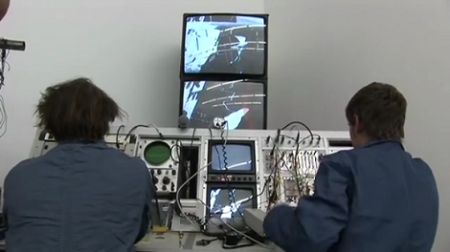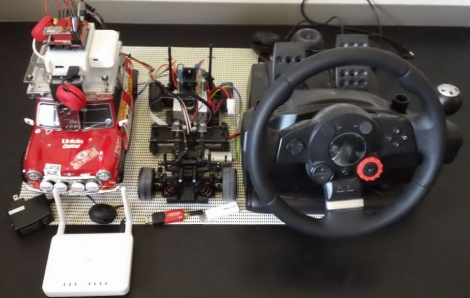
The folks at [anyma] have been working on an analog video processor called Synkie for a while now, and we’re amazed a project this awesome has passed us by for so long.
Like a Moog or Doepfer synth, the Synkie was developed with modularity in mind. So far, [anyma] has built modules to split and combine the sync and video signals, and modules to invert, add, subtract, mix, filter and amplify those signals. The end result of all this video processing produces an output that can look like a glitched Atari, art installation, and scrambled cable station all at the same time.
The Synkie’s output reminds us of the original Doctor Who title sequence, and actually this idea isn’t far off the mark – both use video feedback that will produce anything from a phantasmagoric ‘flying through space’ aesthetic to a fractal Droste effect visualization. We’re impressed with Synkie’s capabilities, but we’re astounded by the [anyma] crew’s ability to control a video signal in real time to get what they want.
Check out a video of the Synkie after the jump. There’s also more footage of the Synkie in action on the Synkie Vimeo channel.















